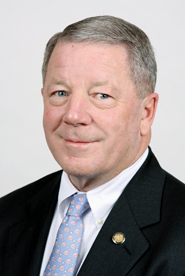After almost 10 years at the helm, John Giesea announced he will retire from his position as president and chief executive of the Security Traders Association.

Giesea has guided the STA through some dynamic and tumultuous times in the industry. His leadership spans the Sept. 11 terrorist attacks to the May 6 "flash crash." It includes significant regulatory and technological changes, from the earliest days of decimalization, to the upsurge of electronic trading, the implementation of Regulation NMS and finally the explosion of high-frequency trading.
Many of those regulatory and technological changes dealt the organization a heavy blow during his tenure. The STA saw its membership numbers decline as many traders saw their jobs disappear. Increased electronic trading and the move to decimalization forced many of them from the business.
Giesea agreed that the industry continues to adjust to the dramatic changes over the past decade. But the STA’s mission to represent the trading community in a global perspective remains the same. It still provides a platform for traders of all stripes, exchanges and market centers to work together, he added.
"But in the day-to-day, certainly, the business has changed," Giesea said, "and STA is a unique organization that does provide input in Washington, D.C. in the formation of market structure. So the goal for STA continues to be important, even though the way trading has been transacted has changed dramatically."
Giesea said he will remain with the STA in his current role to help the organization conduct its search for his successor. "Having spent as long as I have–a total of 18 years on the board of STA–I have a love for the organization and a desire to see it succeed going forward," he said.
The process could last into next year, according to Brett Mock, the current STA chairman and a senior sales trader at BTIG.
Typically, the STA has drawn from the over-the-counter and listed marketplaces for its leadership, Mock said. But since the markets have evolved dramatically over the years through technological advances, the STA will also look at non-traditional places for a future candidate.
"Traditionally, candidates came from broker-dealers. But a candidate can come from outside of the broker-dealer ranks, as well; the pool is not limited to the places where the STA has traditionally searched," Mock said. "But we are a trader’s organization. So, that candidate will need to understand how to trade and execute, and understand the market structure."
Over the years, Giesea improved the STA’s efforts in Washington, D.C. It long had representation in the capital, and had previous chief executives involved in market structure debates, Mock said. "But Giesea did enhance the relationship," he added. "He enhanced the focus. He strengthened our brand and our credibility in D.C."
World events marked the early part of his term. The STA’s headquarters, on the 45th floor of the World Trade Center’s North Tower, were destroyed on Sept. 11. Giesea led the STA’s subsequent move to its office in midtown Manhattan.
"[Giesea] had to pick us up from there and move forward," Mock said. "John has had a sturdy hand at the helm of a very turbulent 10-year period. We are grateful for him being in that role, and appreciate all he’s done for STA."




